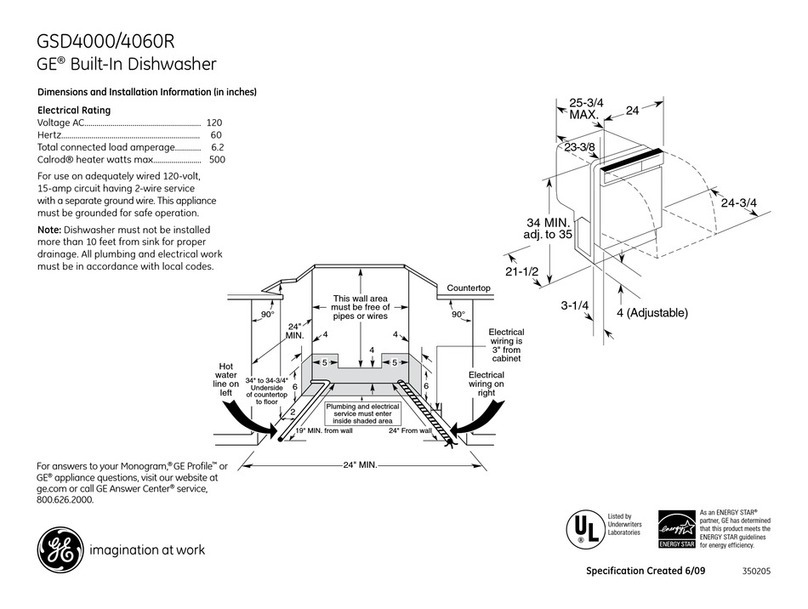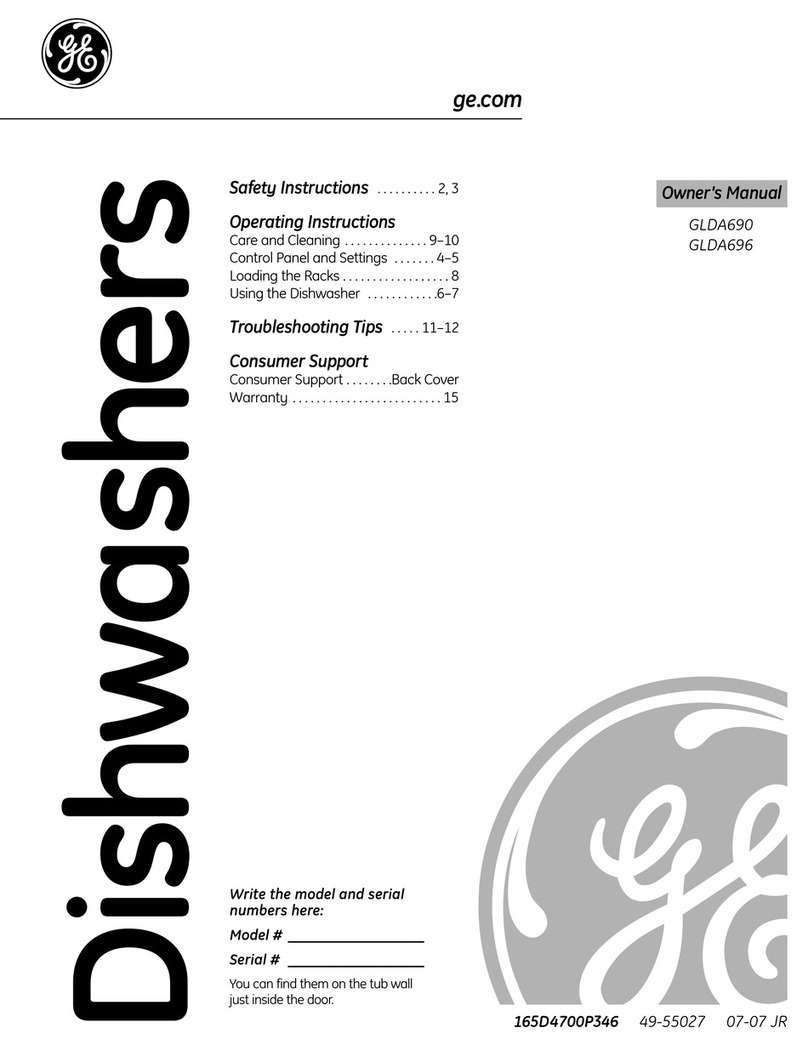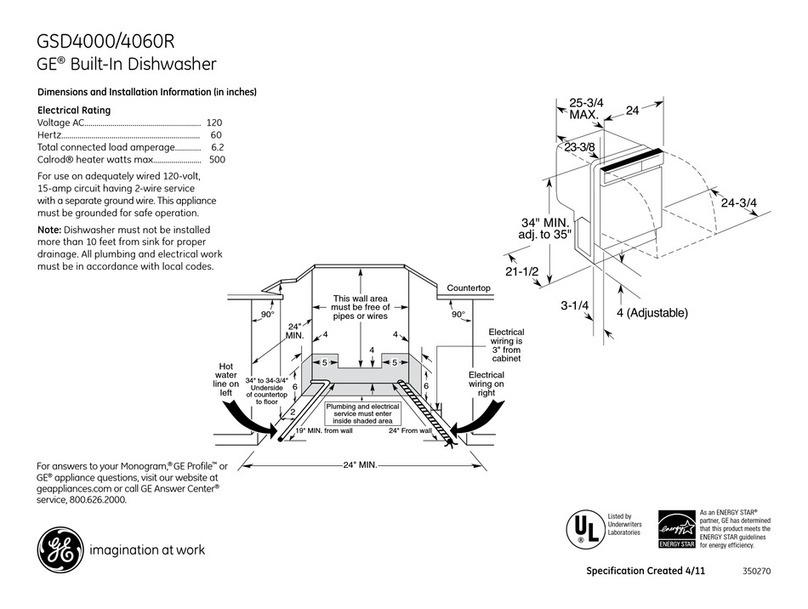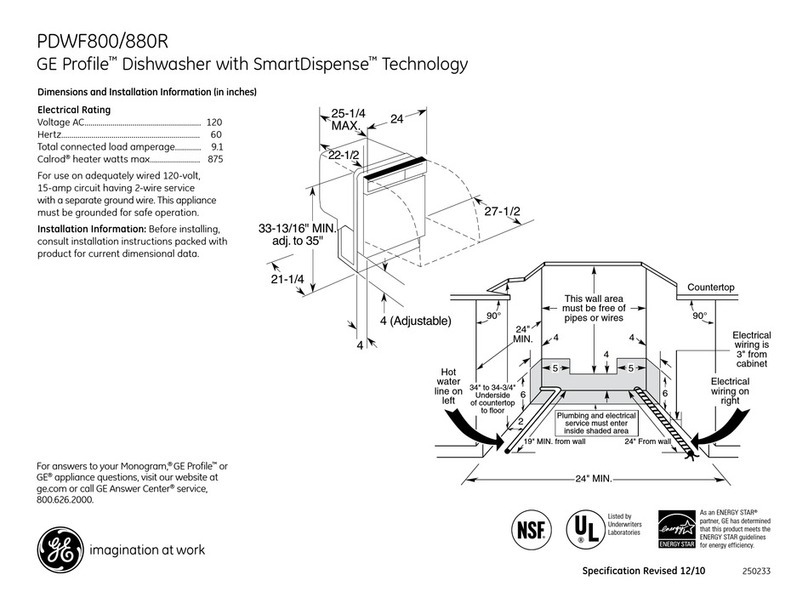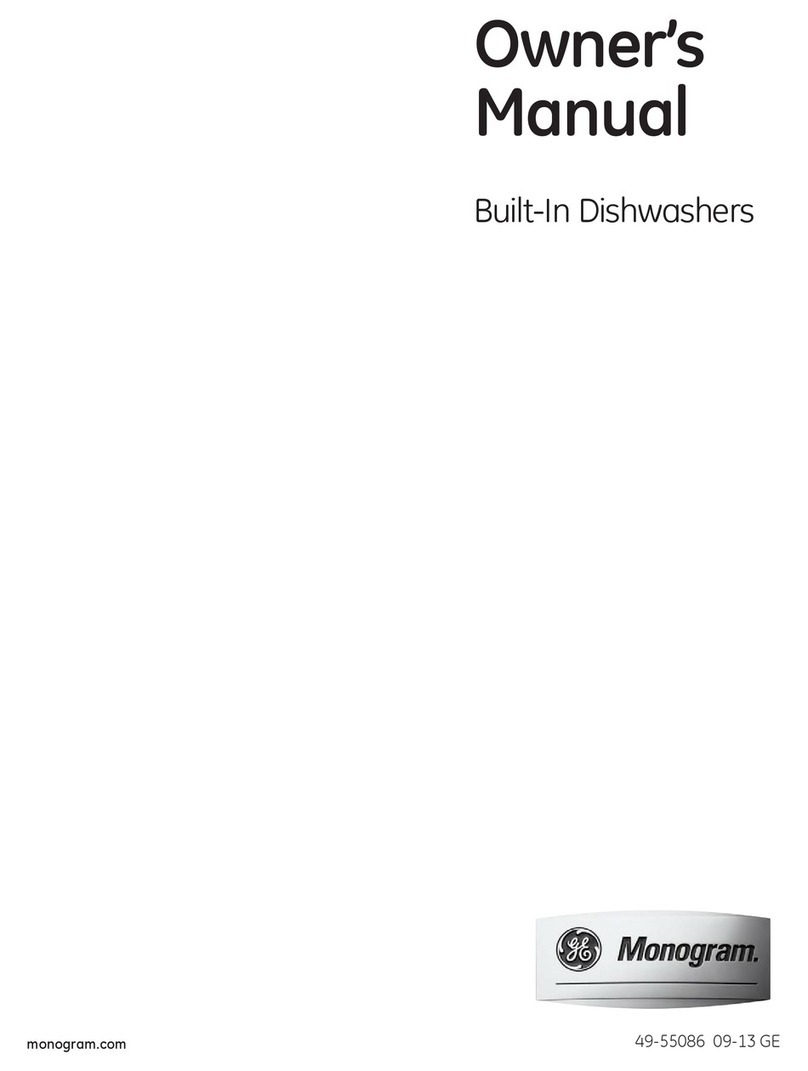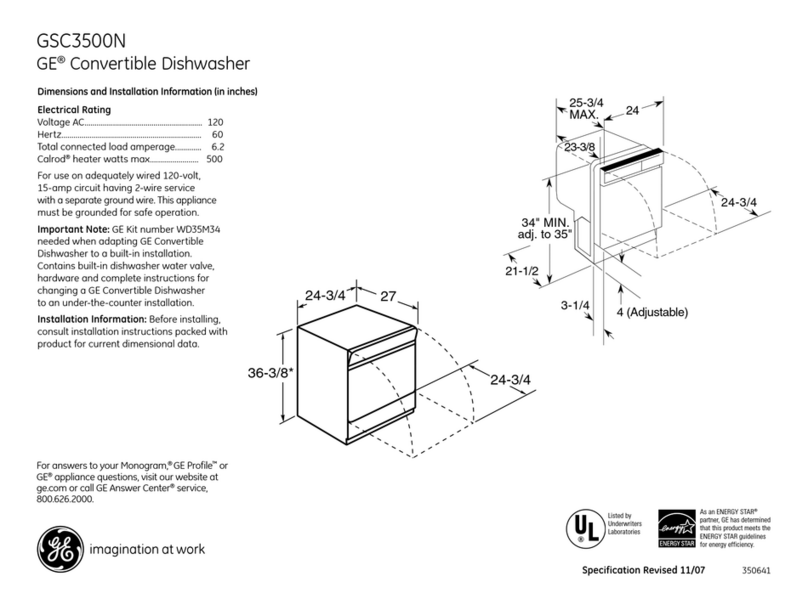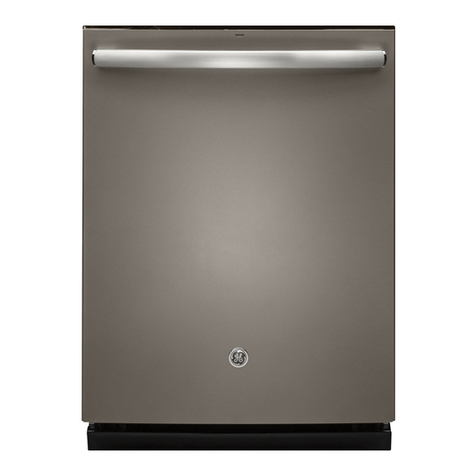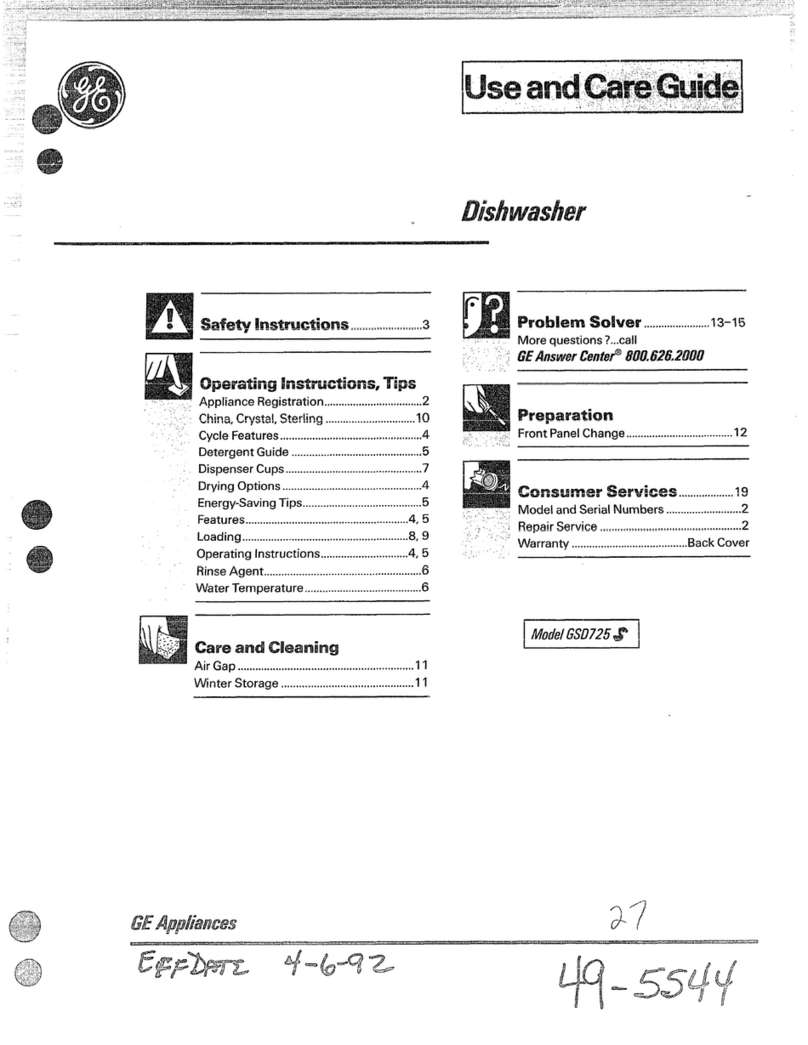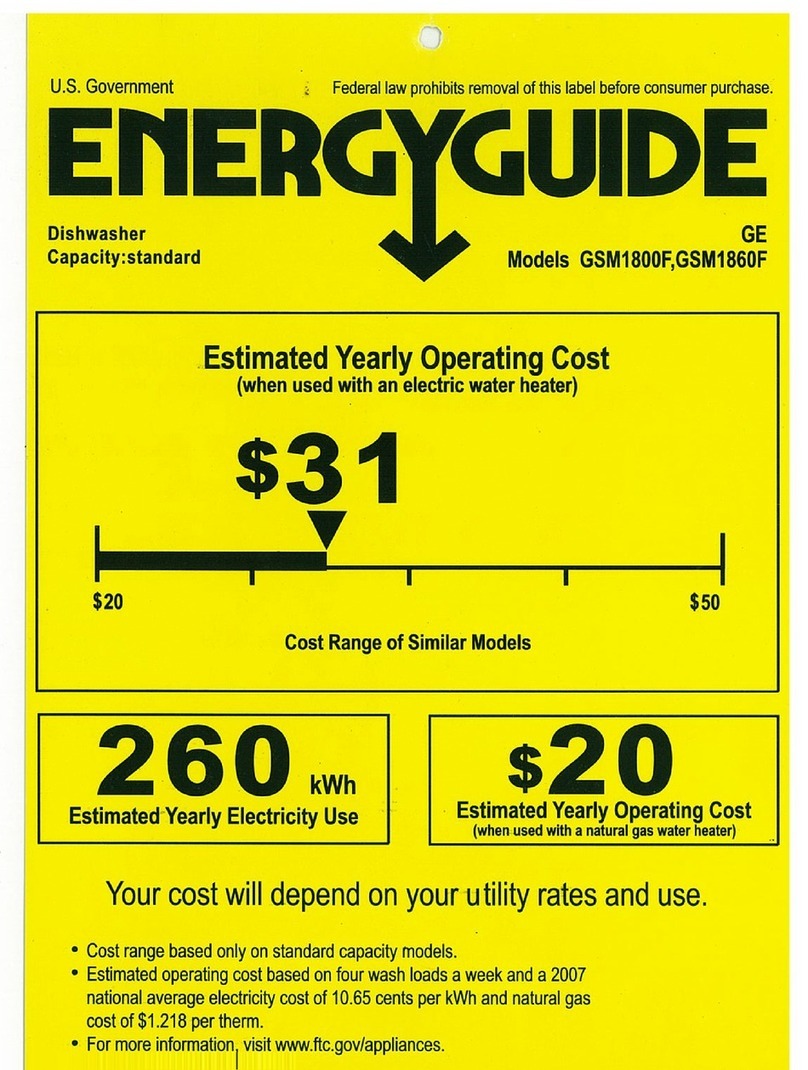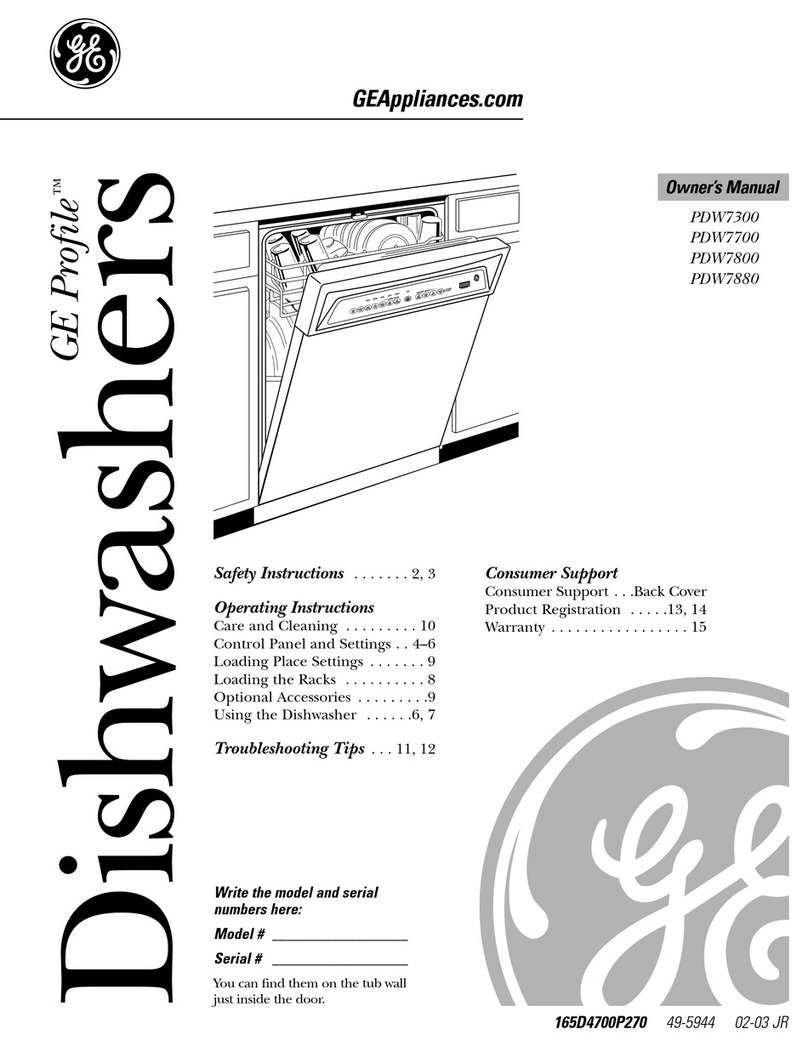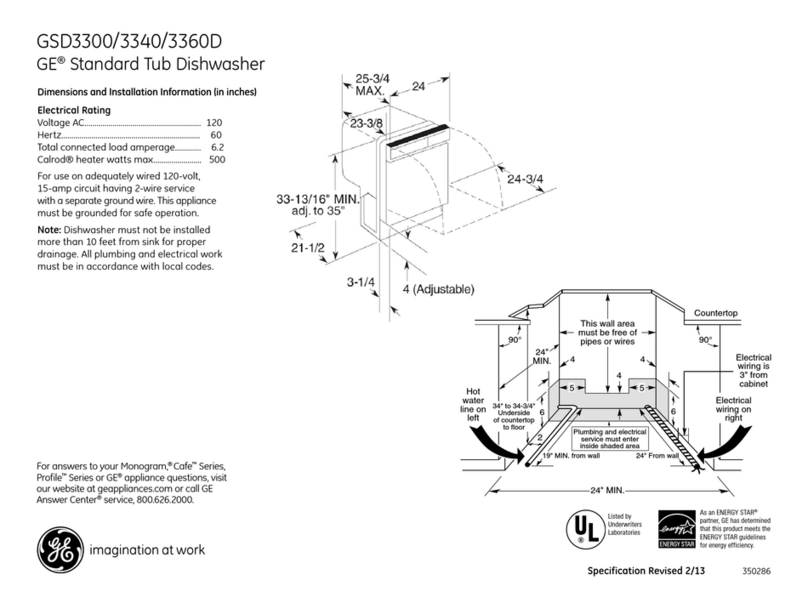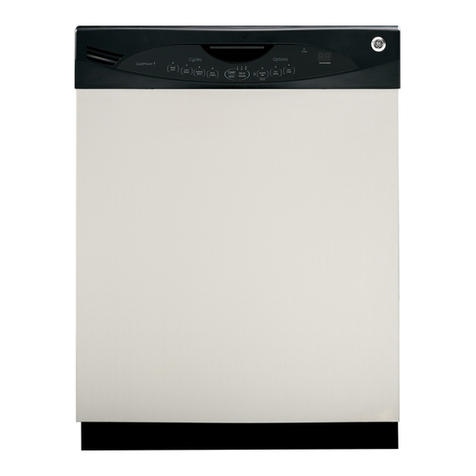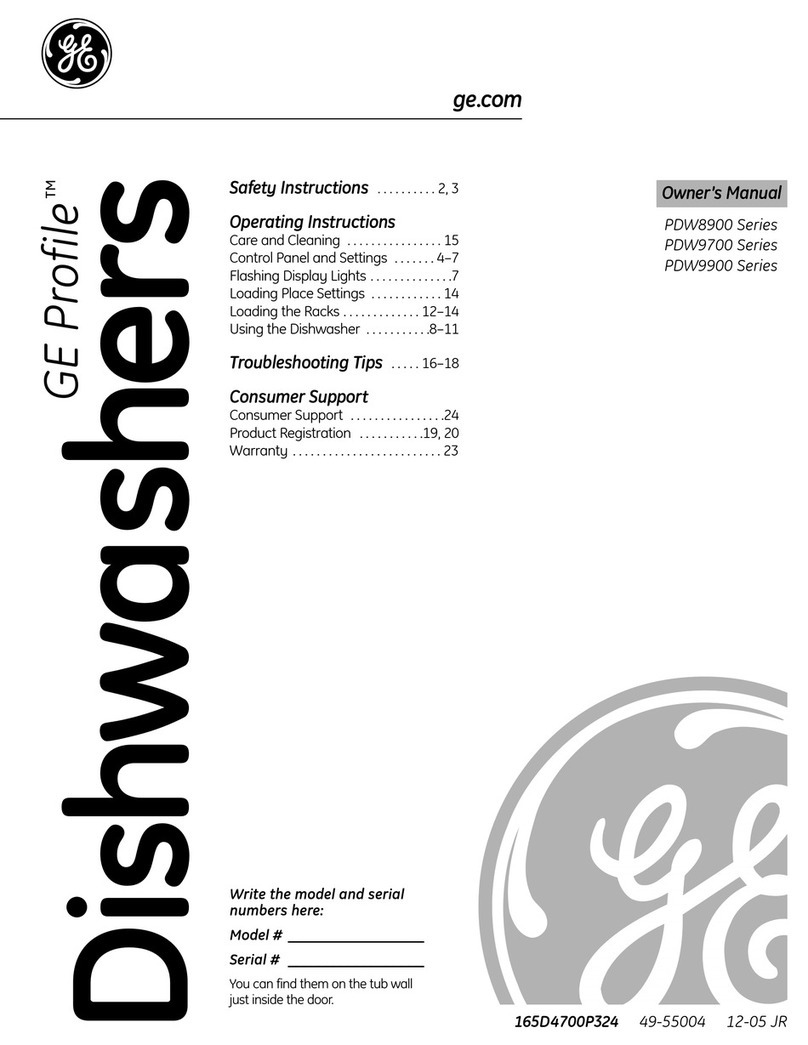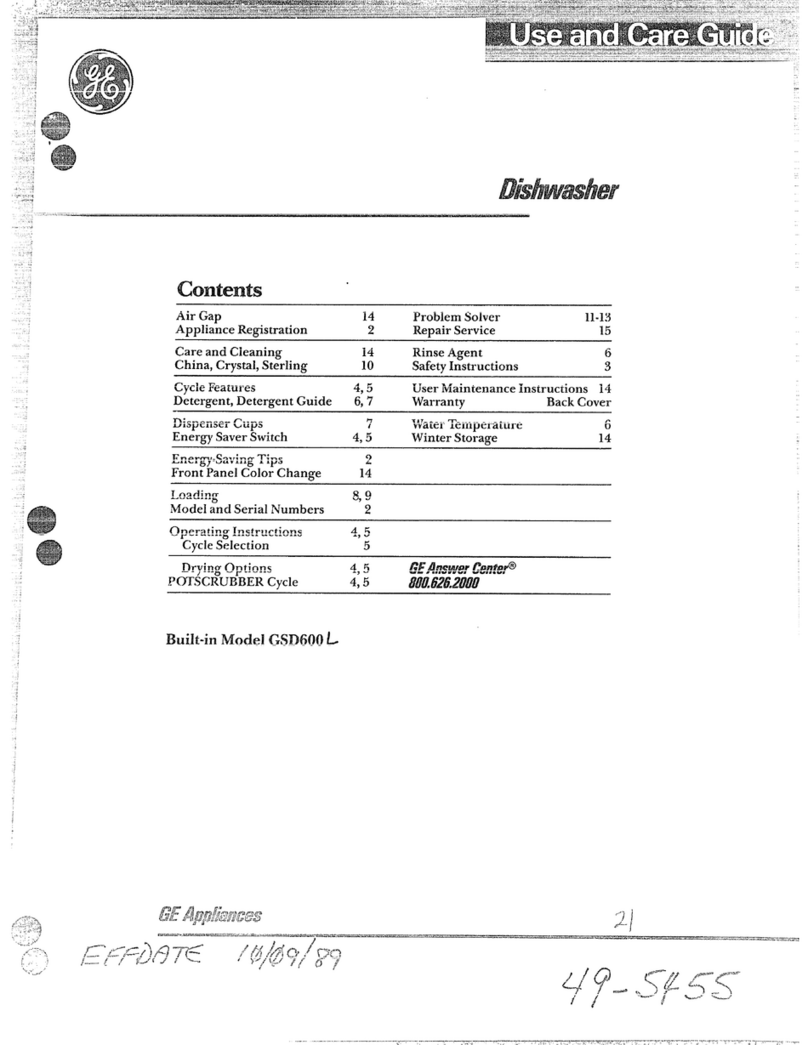Safety InformationOperating InstructionsTroubleshooting TipsCustomer Service
IMPORTANT SAFETY INFORMATION.
READ ALL INSTRUCTIONS BEFORE USING.
6
WHEN USING YOUR DISHWASHER
■Use only powder, tabs or
liquid detergents or wetting
agents recommended for use
in a dishwasher and keep
them out of the reach of
children. Cascade®
Automatic Dishwashing
Detergent has been approved
for use in all GE dishwashers.
■Locate sharp items so that
they are not likely to damage
the door seal.
■Load sharp knives with the
handles up to reduce the risk
of cut-type injuries.
■Do not wash plastic items
unless marked
dishwasher
safe
or the equivalent. For
plastic items not so marked,
check the manufacturer’s
recommendations.
■Non-Dishware Items: Do not
wash items such as electronic
air cleaner filters, furnace
filters and paint brushes in
your dishwasher. Damage to
dishwasher and discoloration
or staining of dishwasher
may result.
■Do not touch the heating
element during or
immediately after use.
■Do not operate your
dishwasher unless all
enclosure panels are
properly in place.
■Close supervision is necessary
if this appliance is used by or
near children.
■Load light plastic items so
they will not become
dislodged and drop to the
bottom of the dishwasher—
they might come into contact
with the heating element and
be damaged.
■Colored aluminum, cast iron,
hand-painted china, wooden,
plastic, rubber and bone-
handled items which are not
marked dishwasher-safe or
equivalent should be washed
by hand.
Read and follow this
Safety Information carefully.
SAVE THESE INSTRUCTIONS

